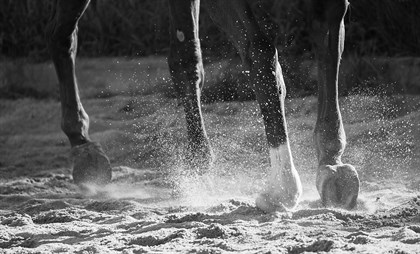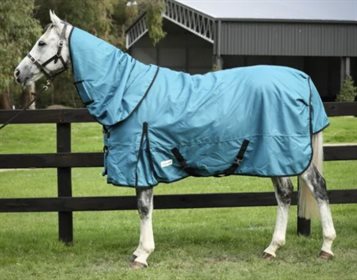Joint disease is a very common ailment for all mammals, particularly as they age. When it comes to horses in particular, the speeds they generate and the relatively small area of joint surfaces they land on can place them at greater risk.
There are many different reasons why a horse may develop joint disease. Every horse is different, however there are key steps associated with the development of joint disease that are consistent across most cases.
Development of joint disease in horses
Step 1:
This image depicts a healthy joint structure consisting of healthy cartilage, synovial membrane and synovial fluid. A joint is composed of important interconnected and interdependent structures that function as a unit rather than in isolation. When a structure within the joint is damaged by disease or injury, this will lead to degradation of other structures and functions of the joint over time.
A healthy joint requires the synovial membrane to act as filter for the synovial fluid, blocking pollutants and allowing healthy nutrients into the synovial cavity. Healthy synovial fluid then helps lubricate the joint and interacts with cartilage to ensure it remains healthy. When these break down, we start having issues.
Step 2:
This image depicts a breakdown of the synovial membrane allowing the good healthy synovial fluid to leach out and pollutants like blood and other inflammatory cells to enter the joint space. The inflammatory cascade has now commenced within the joint.
Step 3:
This image depicts an inflamed joint. Here you may have physical symptoms like swelling and heat starting to present. The inflammatory cascade is self-perpetuating. Here the synovial membrane has continued to be broken down and larger build-up of pollutants (including blood) has occurred now within the joint, starting to block the healthy cartilages ability to interact with the synovial fluid and survive. We are now starting to see cartilage be negatively impacted.
Step 4:
Here is where we often start dealing with joint disease. When we have a physically painful, swollen and hot joint. Often shown by our horses through lack of mobility or discomfort after exercise. The synovial membrane is no longer functioning; there is limited healthy synovial fluid, which is instead replaced with many pollutants intensifying the inflammatory cycle. This leads to further cartilage erosion and life-long damage. You cannot treat this joint by only focusing on one structure; you must treat the underlying ailment and issue — that’s where 4CYTE has been scientifically developed to work.
How does 4CYTE work?
• Promotes Synovial Membrane viability to re-establish quality synovial fluid filtration function to prevent pollutants entering and contain healthy synovial fluid.
• Through improved filtration, can remove pollutants that stop cartilage’s ability to interact with synovial fluid and remain healthy.
• Poliferate chondrocytes (reversing degeneration process).
• Provides anti-inflammatory support to reduce physical symptoms.
This article was written in conjunction with 4CYTE.
READ THE LATEST NEWS ARTICLES HERE









